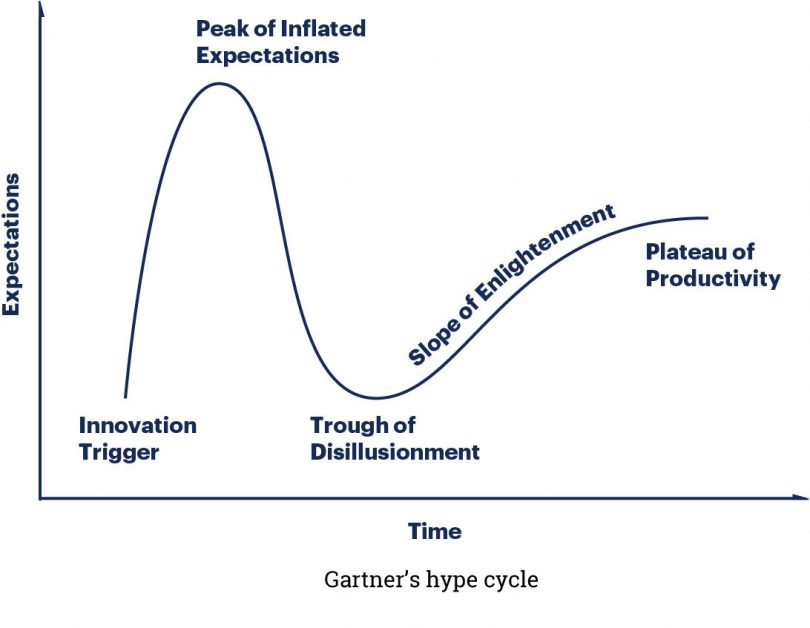In an article published today, Gartner notes the gap between hype an reality when it comes to enterprise blockchain. A survey of 3,000 CIOs shows 11% of firms have deployed or plan to implement blockchain in the short term.
“Blockchain is currently sliding down toward the Trough of Disillusionment in Gartner’s latest ‘Hype Cycle for Emerging Technologies,'” said Adrian Leow, senior research director at Gartner.
“The blockchain platforms and technologies market is still nascent and there is no industry consensus on key components such as product concept, feature set and core application requirements. We do not expect that there will be a single dominant platform within the next five years.”
The blockchain mistakes highlighted relate to blockchain features or lack thereof.
The seven mistakes are:
1. Misusing or misunderstanding blockchain technology
Gartner states that the vast majority of projects focus on recording data. Many fail to use major capabilities such as decentralized consensus, smart contracts and tokenization.
2. Assuming technology is more mature than it is
Some corporates believe blockchain technology is ready for production use, even though many platforms are still immature for large-scale production. Gartner expects this will change within the next few years. Ledger Insights sees the change happening already, though not yet widespread.
3. Confusing a protocol with a business solution
A protocol is the underlying technology such as Hyperledger Fabric of R3’s Corda and is invariably applicable to several industries. Applications need to be developed on top of these. Much like a website or web application leverages the internet.
4. Viewing blockchain as a database
Databases are capable of creating, reading, updating and deleting data. Not so with blockchains. Because of its immutable nature, blockchains are not designed to update and delete data.
Instead, data often has to be appended, which is a different model to conventional data management.
5. Assuming that interoperability standards exist
Although some platforms talk about interoperability, Gartner finds it challenging to envision interoperability when all the protocols are evolving quickly.
“Never select a blockchain platform with the expectation that it will interoperate with next year’s technology from a different vendor,” said Gartner’s Alan Leong.
6. Assuming smart contract technology is a solved problem
Smart contracts don’t just execute code on a single system. Instead, they are run by all nodes on a blockchain. Gartner sees the scalability and manageability issues as yet to be adequately addressed but will mature in the next 2-3 years. Hence it recommends small experiments.
7. Ignoring governance issues
In private or permissioned blockchain governance is usually by the owner or contractual. While challenging, the problem is far bigger for public blockchains.
“Governance in public blockchains such as Ethereum and Bitcoin is mostly aimed at technical issues. Human behaviors or motivation are rarely addressed. CIOs must be aware of the risk that blockchain governance issues might pose for the success of their project. Especially larger organizations should think about joining or forming consortia to help define governance models for the public blockchain,” Mr. Leong concludes.







